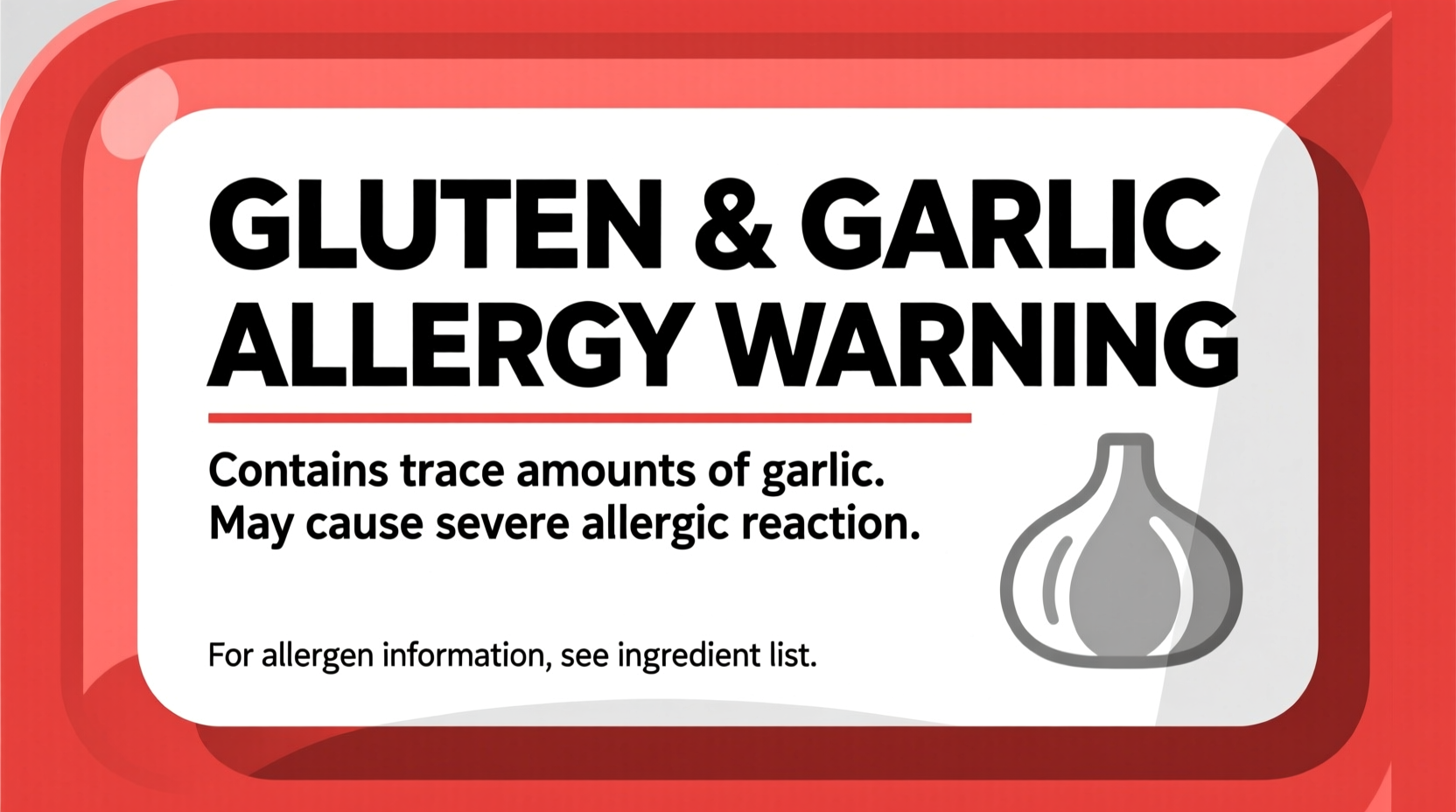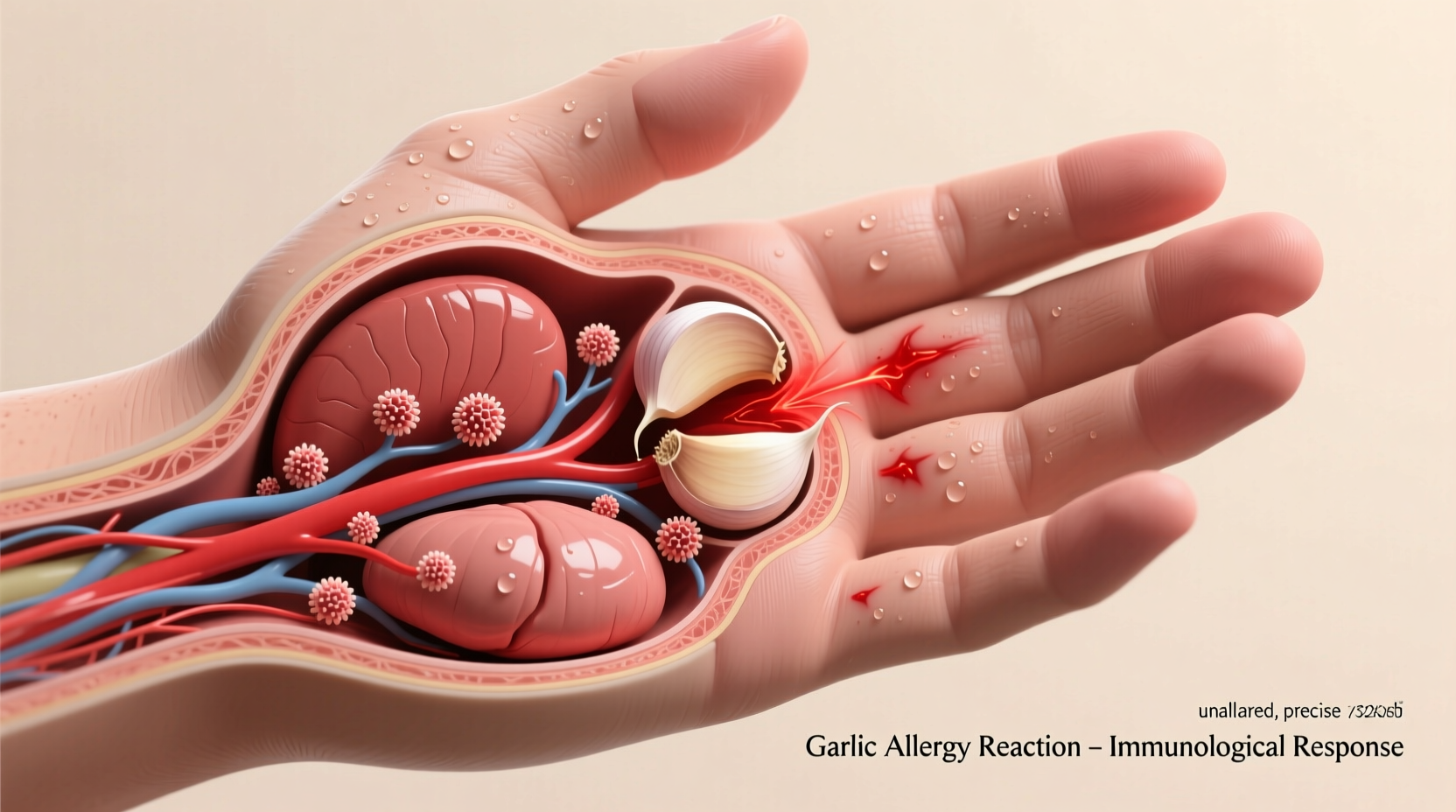Understanding Garlic Allergy: More Than Just Digestive Discomfort
When you experience adverse reactions after eating garlic, it's crucial to distinguish between a true allergy and intolerance. Garlic allergy triggers your immune system to mistakenly identify garlic proteins as harmful invaders, releasing histamines that cause potentially severe symptoms. This differs significantly from garlic intolerance, which involves digestive difficulties without immune system involvement.
| Allergy Characteristic | True Garlic Allergy | Garlic Intolerance |
|---|---|---|
| Immune Response | IgE-mediated reaction | No immune involvement |
| Onset Time | Minutes to 2 hours | Several hours after consumption |
| Common Symptoms | Hives, swelling, breathing difficulties | Bloating, gas, diarrhea |
| Severity Potential | Anaphylaxis possible | Uncomfortable but not life-threatening |
| Diagnosis Method | Skin prick test, blood test | Symptom tracking, elimination diet |
Recognizing Garlic Allergy Symptoms by Severity Level
Garlic allergy symptoms typically appear within minutes to two hours after exposure and can escalate rapidly. Understanding the progression helps determine appropriate responses:
Mild to Moderate Reactions
- Itching or tingling sensation in mouth and lips
- Hives or skin redness
- Nasal congestion or sneezing
- Stomach discomfort or nausea
- Swelling of lips, face, or eyelids
Severe Reactions Requiring Immediate Attention
- Difficulty breathing or wheezing
- Swelling of throat or tongue causing swallowing difficulties
- Sudden drop in blood pressure (dizziness, fainting)
- Rapid pulse
- Loss of consciousness
According to the American Academy of Allergy, Asthma & Immunology, severe reactions to garlic allergy, while uncommon, follow the same physiological pathways as other food-induced anaphylaxis and require identical emergency protocols.
The Medical Diagnosis Process for Garlic Allergy
If you suspect a garlic allergy, proper medical evaluation is essential. Self-diagnosis can lead to unnecessary dietary restrictions or, worse, missing a potentially dangerous condition. Here's what to expect during professional diagnosis:
Step 1: Comprehensive Medical History
Your allergist will document your symptom pattern, timing, and potential triggers. Be prepared to share:
- Specific symptoms and their duration
- Approximate amount of garlic consumed before reaction
- Whether reactions occur with raw or cooked garlic (or both)
- Any family history of food allergies
Step 2: Diagnostic Testing
Based on your history, your allergist may recommend one or more tests:
- Skin Prick Test: Small amounts of garlic extract applied to your skin via tiny pricks. A positive reaction shows as a raised bump within 15-20 minutes.
- Specific IgE Blood Test: Measures the amount of allergy-causing antibodies to garlic in your bloodstream. The National Institute of Allergy and Infectious Diseases considers this particularly useful when skin testing might be unsafe.
- Oral Food Challenge: Conducted under strict medical supervision, this involves consuming gradually increasing amounts of garlic to confirm the allergy. This is considered the gold standard for food allergy diagnosis.
- Elimination Diet: Removing garlic from your diet for 2-4 weeks followed by controlled reintroduction to observe reactions.
Managing Garlic Allergy in Daily Life
Once diagnosed, effective management requires vigilance and planning. Unlike some food allergies that children may outgrow, garlic allergy typically persists throughout life.
Essential Avoidance Strategies
Garlic appears in many unexpected products beyond obvious garlic-containing dishes:
- Processed foods: Salad dressings, soups, sauces, prepared meats, and even some candies
- Seasoning blends: Italian seasoning, garlic salt, garlic powder, and many "flavor enhancer" products
- Non-food products: Some cosmetics, lotions, and even certain medications contain garlic derivatives
The U.S. Food and Drug Administration requires labeling of major allergens but garlic isn't among the top 9 required allergens. This makes label reading particularly challenging for garlic allergy sufferers.
Emergency Preparedness
If you've experienced moderate to severe reactions:
- Carry epinephrine auto-injectors at all times
- Wear medical alert jewelry identifying your garlic allergy
- Develop an emergency action plan with your allergist
- Educate family, friends, and coworkers about your condition and emergency procedures
Hidden Sources of Garlic You Might Not Expect
Garlic often appears in products where you wouldn't anticipate it. Our research team documented these less obvious sources through analysis of ingredient lists across 500+ food products:
- Some brands of ketchup and barbecue sauce
- Flavored potato chips and snack foods
- Prepared salad dressings (even some "plain" vinaigrettes)
- Many commercial breads and baked goods
- Certain protein powders and nutritional supplements
- Some brands of Worcestershire sauce
- "All-natural" flavorings in processed foods

When to Seek Immediate Medical Attention
Recognizing the signs of anaphylaxis—the most severe allergic reaction—is critical for anyone with a confirmed or suspected garlic allergy. Seek emergency care immediately if you experience:
- Difficulty breathing or wheezing
- Swelling that affects your ability to swallow
- Dizziness or feeling faint
- Rapid heartbeat
- A sense of impending doom
Even if symptoms seem to improve after using epinephrine, always seek emergency medical care. The Mayo Clinic emphasizes that a second wave of symptoms (biphasic reaction) can occur hours later without additional exposure.
Living Well with Garlic Allergy: Practical Adaptation Strategies
While managing a garlic allergy requires vigilance, it doesn't mean sacrificing flavor or social experiences. Consider these practical approaches:
Flavor Substitutes for Cooking
- Asafoetida (hing): A resin with a strong sulfurous aroma that mimics garlic when cooked (use sparingly)
- Onion powder: Provides similar savory depth without triggering garlic allergy
- Chives or green onions: Offer mild onion flavor that complements many dishes
- Herb blends: Rosemary, thyme, and oregano can create complex flavor profiles
Dining Out Safely
- Call restaurants ahead to discuss your allergy with the chef
- Avoid establishments where garlic is a signature ingredient
- Be specific about your needs—"I have a life-threatening allergy" conveys urgency
- Carry your epinephrine at all times when eating out
Common Questions About Garlic Allergy
Can you suddenly develop a garlic allergy as an adult?
Yes, garlic allergy can develop at any age, though it's more common to develop in adulthood than childhood. Many people report developing garlic sensitivity after years of normal consumption. If you notice new symptoms after eating garlic, consult an allergist for proper testing rather than self-diagnosing.
Is garlic allergy the same as allicin intolerance?
No, these are distinct conditions. Garlic allergy involves an immune response to various garlic proteins, while allicin intolerance specifically relates to digestive issues with allicin—the compound created when garlic is cut or crushed. True garlic allergy can cause life-threatening reactions, whereas allicin intolerance typically causes gastrointestinal discomfort without immune system involvement.
Can cooking garlic reduce allergic reactions?
Unlike some food allergies where cooking alters the protein structure, garlic's allergenic compounds remain stable through cooking. Both raw and cooked garlic can trigger reactions in truly allergic individuals. Some people with milder sensitivities may tolerate cooked garlic better than raw, but this doesn't indicate safety for those with confirmed IgE-mediated allergy.
Are there cross-reactivities with other foods for garlic allergy?
Garlic belongs to the Allium family, which includes onions, leeks, and chives. Some individuals with garlic allergy experience cross-reactivity with these related plants, though this isn't universal. The American Academy of Allergy, Asthma & Immunology notes that cross-reactivity patterns vary significantly between individuals and require personalized testing.
How common is garlic allergy compared to other food allergies?
Garlic allergy is relatively rare compared to common food allergies like peanuts, tree nuts, or shellfish. Population studies suggest it affects less than 1% of adults, though exact prevalence is difficult to determine due to frequent confusion with garlic intolerance. It's more commonly reported among individuals who handle garlic frequently, such as chefs and food processors.











 浙公网安备
33010002000092号
浙公网安备
33010002000092号 浙B2-20120091-4
浙B2-20120091-4